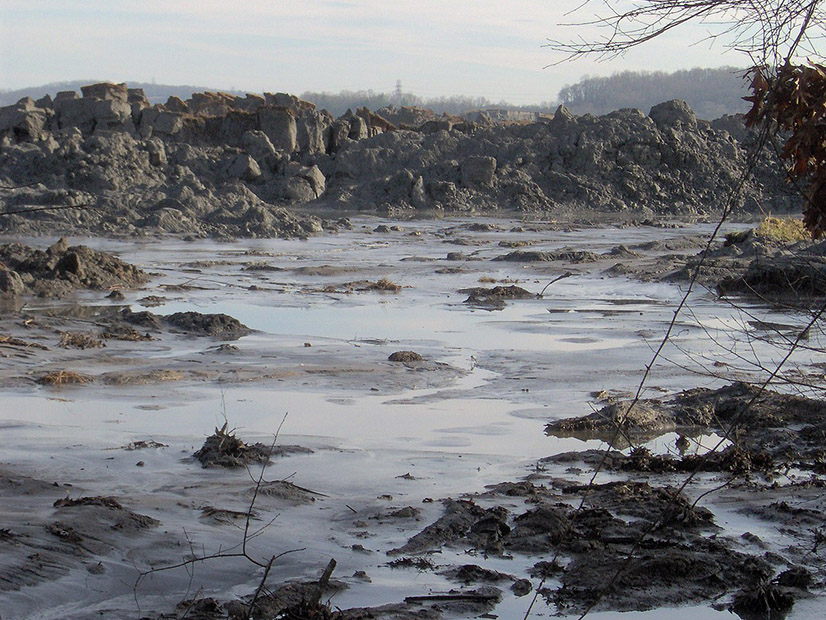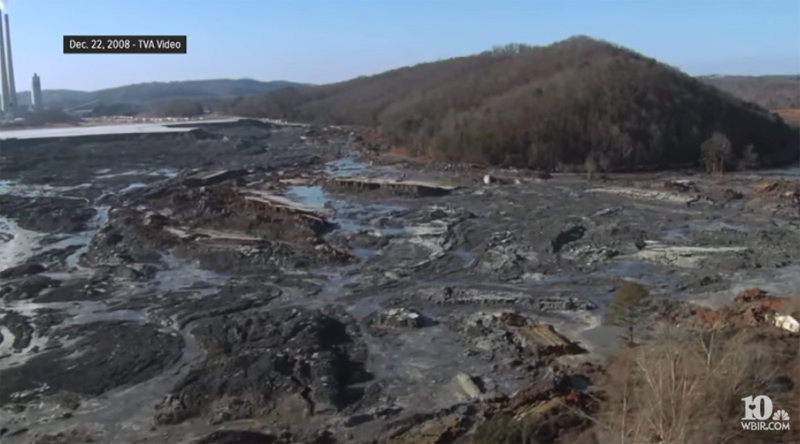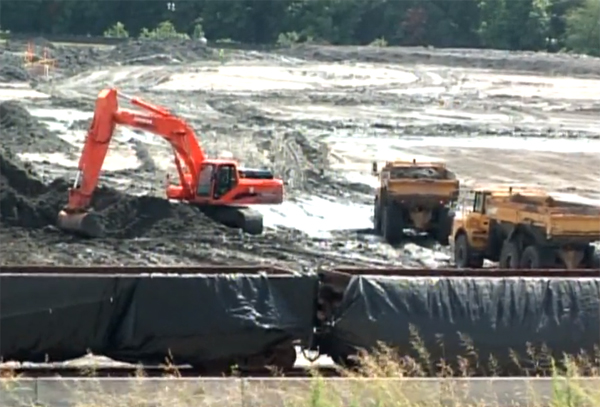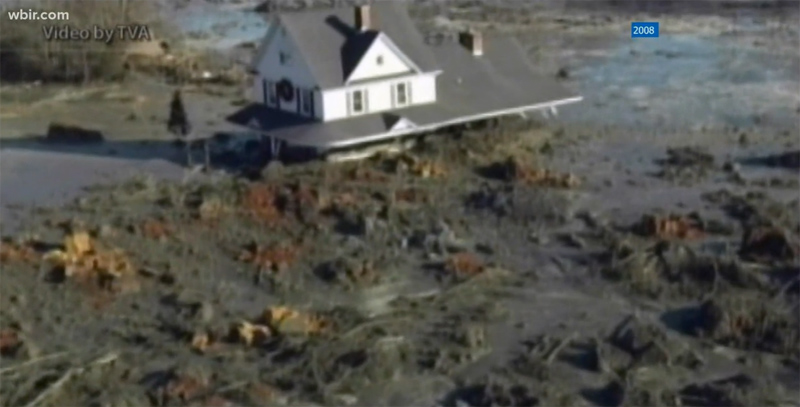
A grand jury on Monday declined to return indictments over the Tennessee Valley Authority’s cleanup of the 2008 Kingston Fossil Plant coal ash spill, saying allegations the utility exposed workers to harm should instead be investigated by federal authorities.
The Roane County (Tenn.) grand jury heard presentations from the District Attorney General’s (DAG) Office, the Tennessee Bureau of Investigation and a former investigative reporter regarding allegations that dozens of cleanup workers were poisoned by exposure to coal ash after a dike at a TVA ash impoundment collapsed, sending a billion gallons of waste into the Clinch and Emory rivers.
The U.S. Coast Guard conducted the initial response to the spill, which covered 300 acres of farms and homes, along with local responders under the oversight of the Environmental Protection Agency. In 2009, EPA turned the site over to TVA, which hired Jacobs Engineering (NYSE:J) to oversee the cleanup under the Comprehensive Environmental Response, Compensation, and Liability Act (CERCLA).
 The aftermath of the Kingston spill. | TVA
The aftermath of the Kingston spill. | TVATVA was found liable for the spill by a federal district court and had to compensate affected landowners. Cleanup costs have totaled about $1 billion.
Jamie Satterfield, a former reporter for the Knoxville News Sentinel, asked the grand jury to indict four mid-level supervisors for TVA, Jacobs, and subcontractor Shaw Industries under a state law that allows citizens to present information to grand juries.
The grand jury released a statement saying only two of the 12 jurors supported a state indictment and that “the evidence [was] better suited for federal authorities to investigate and prosecute.”
“We found much of the evidence about TVA & Jacobs’ handling of the cleanup, relative to worker safety, very concerning,” they said.
Covered in Ash
Jacobs employees said they were covered in ash during the work and were not provided adequate safety equipment.
More than 900 workers were involved in the cleanup, 258 of whom sued Jacobs Engineering. More than 50 workers have since died. In 2018, a federal civil jury found Jacobs liable for failing to inform workers and protect them from the dangers of coal ash.
The jury found exposure to coal ash could cause illnesses, including heart disease, lung and skin cancer, leukemia and emphysema. But the damages phase of the suit was delayed following a January 2019 order that the parties engage in mediation, which failed to resolve the matter. Jacobs is now seeking a ruling from the Tennessee Supreme Court on its claim for “derivative governmental immunity,” according to TVA’s latest 10-K filing.
 Cleanup work in progress | WBIR
Cleanup work in progress | WBIRThe TBI and DAG’s office began investigating the cleanup at the behest of a different Roane County grand jury in 2020. Among the allegations were alterations of air monitor results and other environmental tests and a failure to inform, protect and provide safety measures for cleanup workers.
In a statement, District Attorney General Russell Johnson said investigators couldn’t prove the ash exposure caused deaths without autopsies. He also cited the four-year statute of limitations on reckless homicide.
Johnson said that the cleanup was largely completed by 2014. “Therefore, anything that happened from December 2008 through December 2014 was now almost seven years old, making any state criminal charge problematic at best and, from a legal standpoint, impossible due to statutes of limitation.”
Johnson said the statement by the grand jury suggested “they were reluctant to hold four site supervisors criminally responsible for something that the grand jurors evidently perceived to possibly be ‘sins’ of the employers.”
“This is really a matter that the U.S. Attorney and the federal Office of Inspector General are better equipped to handle given that the initial cleanup from December 22, 2008 to May 2009 was conducted under the federal EPA, then from May 2009 to December 2014 the cleanup was conducted under a Presidential Order under CERCLA and EPA with TVA responsible for Jacobs Engineering as their selected contractor — all under federal jurisdiction.”
‘Best Available Science’
TVA said in a statement Tuesday that its cleanup plan “was created using the best available science on how to perform the work safely” in accordance with CERCLA.
“The state investigation has correctly concluded without any finding of wrongdoing,” Jacobs said Tuesday. “Jacobs stands by its work assisting TVA with the difficult job of cleaning up the Kingston coal ash spill. Jacobs did not cause the spill or cause any workers to be injured, and the allegations were baseless.”
Shaw did not respond to a request for comment.
Uranium, Radium
The Knoxville News Sentinel reported in stories by Satterfield that the coal ash had three times more uranium than documented in public reports. Satterfield also reported that TVA has known since at least 1981 that its coal ash contained radium 226 at levels that could cause cancer but did not inform the public.
The newspaper also reported that Tennessee regulators issued a public report on sampling of the coal ash that deleted a reading for radium and reduced readings for uranium by 98%.
 A home is swallowed by the flood of coal ash. | TVA
A home is swallowed by the flood of coal ash. | TVASatterfield was fired in August, ending a 27-year career at the paper, after she spoke at a public meeting in Anderson County, when she gave officials an emotional warning that TVA had used coal ash waste as infill in its construction of a playing field.
Coal fly ash, a byproduct of coal burning, is used in Portland cement and sheetrock.
In 2015, EPA finalized regulations on coal ash — also known as coal combustion residuals (CCR) — noting it contains mercury, cadmium and arsenic, which are associated with cancer and other ailments. The agency’s rule addresses the risks from leaks into groundwater, exposure to coal ash dust and the failure of surface impoundments such as Kingston.
But EPA has not classified it as a hazardous waste.
Satterfield, who said she shared evidence backing her allegations with the Office of Inspector General in September, called the grand jury’s action “not a win but not a loss.”
“This was as intentional an act as could be,” she told RTO Insider. “These workers … didn’t ask, ‘What am I running into?’ They said, ‘Where do you need us? There might be bodies under this stuff. Where do you need us?”



